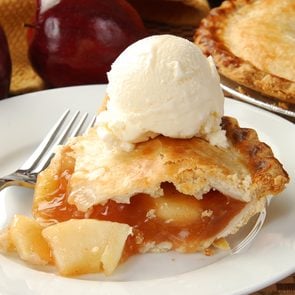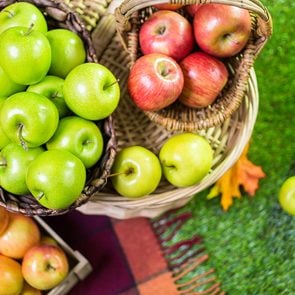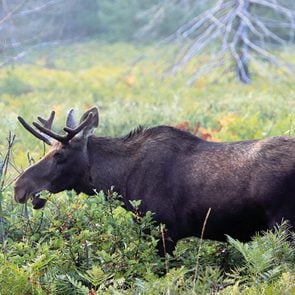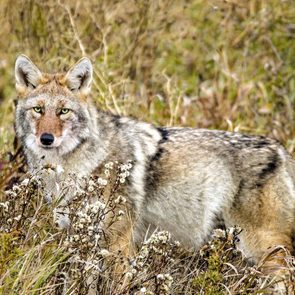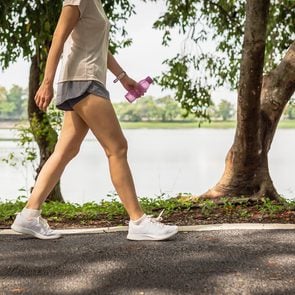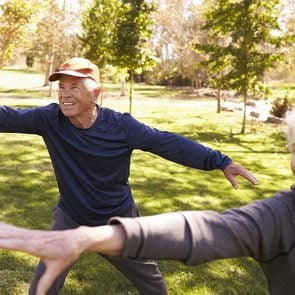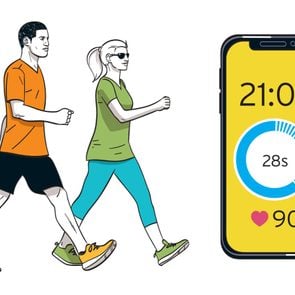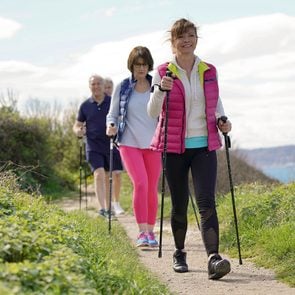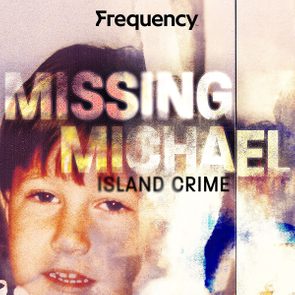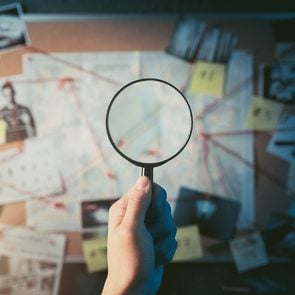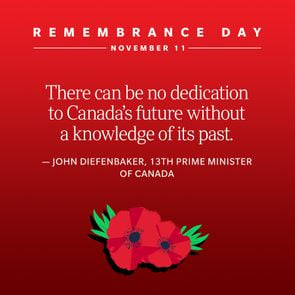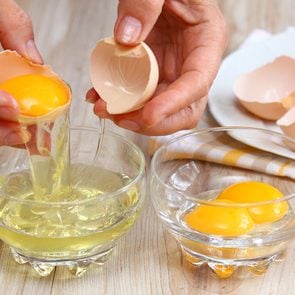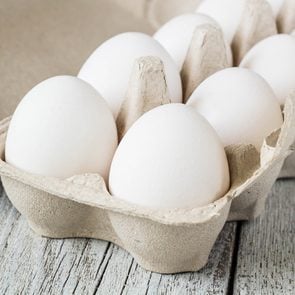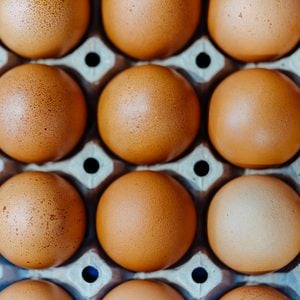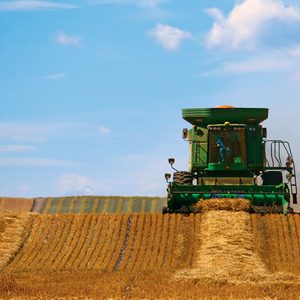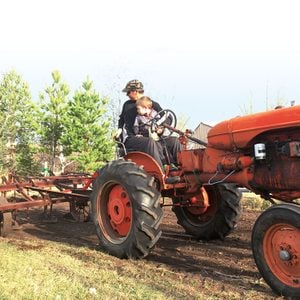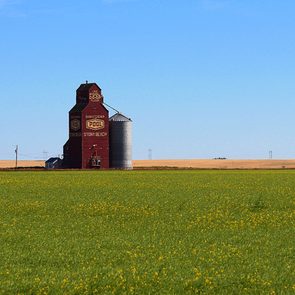
What are apple cider cheesecake cookies?
These cookies combine our go-to fall beverage—apple cider—with two of our favourite desserts: cheesecake and cookies. According to recipe developer Ginny Dyer, the cookies taste exactly like apple cider doughnuts with a cheesecake filling. Yum!
How to make apple cider cheesecake cookies
This viral recipe was shared by @inbloombakery on TikTok. The original post for “super chewy apple cider spiced cookies stuffed with creamy cheesecake” has 775,000 likes and counting. In other words, the internet can’t get enough!
@inbloombakery APPLE CIDER CHEESECAKE COOKIES🍎✨ Super chewy apple cider spiced cookies stuffed with creamy cheesecake filling, brushed with butter & sprinkled with spiced sugar. The key to lots of apple cider flavor without adding too much moisture to the cookies is reducing the apple cider A LOT. Like you’re going to almost make a hard candy with it, you can see how hard and sticky it gets, but this will allow the cookies to stay super chewy while adding a strong apple flavor! And we’re stuffing them with cream cheese for good measure, but if you’d rather, you can leave the cheesecake part out ❤️ #applecidercookie #applecider #cheesecakecookies #applecookies #fallbaking #fallcookies ♬ Moonlight Serenade – Glenn Miller
Ingredients
Cheesecake filling:
- 6 ounces cream cheese, cold
- 3 tablespoons granulated sugar
Cookies:
- 2 cups apple cider
- 1-3/4 cups all-purpose flour
- 2-1/2 teaspoon cinnamon
- 1/2 teaspoon nutmeg
- 1/4 teaspoon allspice
- 1/2 teaspoon baking powder
- 1/2 teaspoon baking soda
- 1/2 teaspoon salt
- 3/4 cup unsalted butter, softened
- 3/4 light brown sugar
- 1/4 cup granulated sugar
- 2 egg yolks, room temperature
- 2 teaspoon vanilla extract
Spiced sugar:
- 1/4 cup granulated sugar
- 1/4 teaspoon cinnamon
- 1/8 teaspoon nutmeg
- Pinch of allspice
- 1-2 tablespoon salted butter, melted
Directions
Step 1: Simmer the apple cider
Start off by creating an apple cider reduction, which Ginny says is the most important step. In medium saucepan over low to medium heat, simmer 2 cups of apple cider for 25 to 38 minutes. It’s an odd range, but the exact time depends on the heat. You’ll know the reduction is almost done once the consistency noticeably becomes more bubbly. Stir consistently to make sure it’s not overdone. The final result will be 2 tablespoons of a viscous, honey-like texture.
Step 2: Prep the cheesecake filling
Throw cream cheese, granulated sugar and vanilla in a small bowl and cream with a hand mixer on medium to high speed for 2 minutes. The cheesecake filling should have a pillowy consistency and the sugar should be fully dissolved.
In increments of 2 teaspoons, line up 16 cheesecake filling scoops onto a baking sheet lined with parchment paper. Then, pop those cheesecake dollops into your freezer. Ginny advises to wait until they’re frozen and firm so the filling won’t leak out from the cookies as they’re baking.
Step 3: Preheat the oven and prepare baking sheets
Preheat your oven to 350°F. Then, prep two baking sheets by lining them with parchment paper.
Step 4: Create a flour mixture
Add flour, cinnamon, nutmeg, allspice, baking soda, baking powder and salt to a medium bowl and whisk it all together—the right way! Put the mixture aside.
Step 5: Cream butter and sugar
In a large bowl, cream the butter, brown sugar and granulated sugar until the result is light and fluffy.
Step 6: Add in the rest of the cookie ingredients
Add the egg yolks, vanilla and apple cider reduction to the rest of the wet ingredients. Mix on medium speed for 3 to 5 minutes.
Ginny’s Tip: The apple cider reduction will be extra sticky after it’s cool, so get ready to scrape it from a spoon!
Step 7: Combine wet and dry ingredients
Add the dry ingredients. Fully mix the ingredients all together on low speed. Use plastic wrap to cover the bowl and place it in the fridge for 15 to 20 minutes. Ginny says this makes the dough easier to work with.
Step 8: Place the cookie dough on baking sheets
After the cookie dough has chilled, scoop 16 1-1/2 tablespoon portions of dough. Use three fingers to slightly flatten each dough portion. Grab a dollop of the cheesecake filling and place in the centre of the flattened dough. Then, wrap the dough around the cheesecake filling until it’s fully concealed by the dough. Repeat for the rest of the cookies.
Take the prepared cookie dough balls and place them evenly on a baking sheet. Then, pop 6 cookies in the oven at a time. They take 11 to 12 minutes to bake, and Ginny recommends 11-1/2 minutes as the ideal baking sweet spot. Let each batch cool for 15 minutes before transferring onto a wire rack to fully cool.
Step 9: Create the spiced sugar
Add sugar, cinnamon, nutmeg and allspice to a small bowl and mix together.
Wait for the cookies to fully cool before using a pastry brush to brush melted butter on the top of the cookies. Then sprinkle on the spiced sugar. Your apple cider cheesecake cookies are ready to serve!
Next, check out 12 fall cookies that’ll make your home smell amazing.
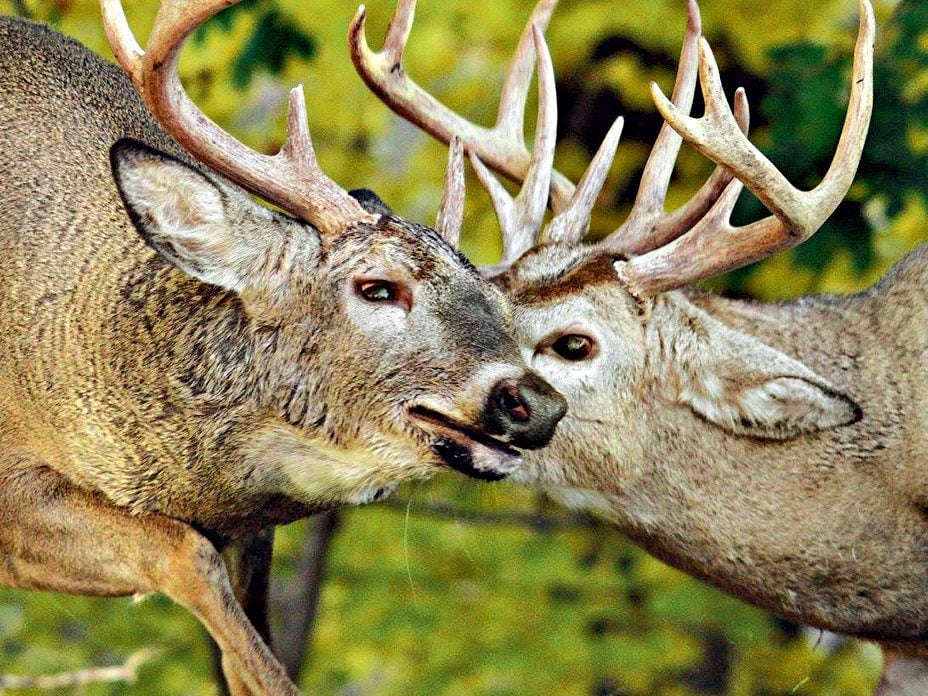
The Art of Photographing Deer in Rutting Season
I often photograph wildlife. It has been a hobby—and passion—of mine for nearly 20 years. A nearby cemetery I sometimes go to boasts an incredible amount of wildlife. I’ve photographed owls, hawks, eagles, groundhogs, wild turkeys and more.
I especially love photographing deer. Although I like capturing them all year round, I do like to get to places during rutting season, when the male deer exhibit their dominance towards one another as they choose a mate. On this fall day, as these two bucks sparred with each other, it was so intense I was surprised they both survived!
They stood eye to eye, stomping and pushing back with great force. I was lucky enough to witness this show of dominance in the buck world.
Once a mate has been selected by the dominant buck, the others know to stay away—and a new family member is sure to arrive by spring or early summer.
The circle of life is complete for another season and the deer world can relax and concentrate on surviving another long, cold winter.
Whether hiking in the woods, along the water or elsewhere, I love photographing all wildlife—my camera is ready for anything.
Next, find out why the common loon is anything but common.
In the last few years, pickleball has taken Europe and North America by storm. There are more than 200 official community clubs registered with Pickleball Canada and an estimated one million Canadians playing each month. In the U.S., there is a professional league (ex NFLer Tom Brady is part owner of a Major League Pickleball team). And the International Federation of Pickleball, which has 60 member countries and counting, is working toward having the game recognized as an Olympic sport. So if you haven’t played it yourself, you’ve probably at least heard of pickleball—even if you don’t quite understand it.
What is pickleball?
“Pickleball takes components from tennis, badminton and table tennis,” says Hope Tolley, managing director of recreational programs for USA Pickleball. It’s played on a badminton-sized court and with a net that’s almost as high as for tennis. Players use square paddles and a small, perforated plastic ball that’s similar in size to a tennis ball, but much lighter. Since the lighter ball doesn’t bounce as much, it’s easier to get a rally (continuous back-and-forth play) going.
How to play pickleball
Unlike tennis, you can score only when it’s your turn to serve. If your opponent (called the receiver) fails to return the ball over the net, either from the serve or in a rally, you get the point. Be sure to hit with enough force or you’ll end up with a “falafel”—pickleball slang for a shot that falls short of the net. Matches can be played in doubles or singles, and games are played to 11 points (and must be won by a margin of two points). Lose with a score of 11–0 and you’ve been “pickled”!

The benefits of pickleball
Whether you play regularly—making you a “pickler”—or only once in a while, it’s a very social game and a great way to make new friends, says Tolley. “It’s a sport that’s bringing folks together.”
Part of the appeal is that pickleball is easy to learn and is accessible to anyone, from kids to seniors. While older adults were early adopters, those aged 18 to 34 now represent the fastest-growing player group.
It all started in the U.S. in the 1960s, in the backyard of congressman Joel Pritchard from Washington state. He and two dad friends started an improvised game of badminton, with the goal of keeping their kids busy, using what was on hand: an old badminton court, some Ping-Pong paddles, a volleyball net and a wiffle ball.
Fast forward six decades and pickleball—the name is a nod to “pickle boats,” a term used to describe a motley group of rowers who are thrown together at random to compete—is one of the hottest trends in sports and popular culture.
Playing the game can improve your hand-eye coordination and increase your reaction time. And because you can vary the intensity—playing all-out from the get-go or taking a slower pace—pickleball suits serious athletes and weekend warriors alike. It’s a great aerobic workout, and because it’s a low-impact sport, it’s easy on your joints.
How to get started
You don’t need to join a league to get in on the action. “It can be played in non-traditional spaces like gymnasiums and parking lots,” says Tolley. Any smooth surface will work, as long as you have a net, a ball and a paddle (available to buy for as little as $30).
People who are really into the sport can join tournaments at various levels. The first-ever World Pickleball Games will be held next summer at the Austin Pickle Ranch in Texas with teams coming from around the world.
By 2030, pickleball is expected to have as many as 40 million players worldwide. Its popularity has also led to increased interest in other racket sports. For instance, padel, a fast-paced combination of tennis and squash invented in Mexico in the late 1960s, is gaining traction across Europe and South America.
Next, discover the proven health benefits of nordic walking.
There are so many health benefits of regular exercise, and the cardiovascular health benefits often get the most attention—but a growing body of research is highlighting a link between physical fitness and lower cancer risk. Now, a new study from the University of Gothenburg in Sweden published in August 2023 in the peer-reviewed British Journal of Sports Medicine reveals a striking correlation between cardiorespiratory fitness in the teenage years and a lowered risk of several cancers in adulthood.
Cardiorespiratory fitness refers to how well the heart and lungs work together to provide energy during prolonged physical activity and to clear away fatigue-causing products afterward. This fitness is often built through aerobic exercises like running, cycling, and swimming—all worthy pastimes, as the Centers for Disease Control and Prevention suggests cardiorespiratory wellness is a key aspect of overall physical health.
Aron Onerup, MD, PhD, a postdoctoral researcher at the University of Gothenburg and St. Jude Children’s Research Hospital, was one of the study’s authors. In a press release, Dr. Onerup highlighted the study’s importance, stating, “A good level of fitness seems to be able to reduce the risk of many types of cancer, as well as leaving individuals better equipped for successful treatment results if they develop cancer.”
Here’s more background that might inspire you to stay moving.
For more wellness updates, sign up for the (free!) Reader’s Digest Health Report.
How the study worked
The research team analyzed data from a massive cohort of over a million Swedish men. All these individuals underwent mandatory military enlistment between 1968 and 2005, with an average age hovering around 18 years.
Because the study spanned several decades and used such a large sample of people, its findings are considered uniquely credible.
Cardiorespiratory fitness today, lower risk of cancers tomorrow
According to the research, physical fitness in youth seems to be a fierce adversary against several cancers. The study noted that men with commendable fitness levels at 18 showed significantly reduced risks in later years of developing cancers of the following physiological sites:
- the head, neck and esophagus
- stomach
- pancreas
- liver
- colon
- rectum
- kidney
- lungs
The gastrointestinal tract, in particular, reaped the benefits of early-life fitness. Men who were fit in their youth experienced around a 40% lower risk of esophageal and liver cancers. Cancers of the stomach and colon followed suit, with a roughly 20% risk reduction.
However, the narrative took an intriguing twist when the study revealed higher diagnosis rates for prostate and skin cancers among fitter individuals. A plausible explanation from the researchers is that men with higher fitness levels tend to be more proactive about their health, opting for regular screenings that help lead to earlier detection of prostate cancer and skin lesions so they can be treated before they progress or metastasize. (Note: If you enjoy exercising outdoors, it’s always wise to wear sunscreen.)
A significant portion of the aerobically fit individuals were likely non-smokers, which might help explain a reduced lung cancer risk.
Here are the skin cancer symptoms you should never ignore.
A longitudinal commitment to fitness
The ramifications of these findings can inform public health strategies. Maria Åberg, MD, professor in general medicine at Sahlgrenska Academy at the university, says these results should spur younger generations to embrace physical activity.
However, while the findings champion the merits of early fitness, they also serve as a reminder of its enduring importance. Mats Börjesson, MD, professor in sports physiology at the university and senior author of the study, warns against letting the demands of life slow down your exercise routine over time. He stresses: “Lifestyle habits are established early, and often remain stable throughout life. The study should not be interpreted as suggesting that it is enough to exercise when young. We believe that it is also of great importance later in life.”
The University of Gothenburg’s study makes it clear: While early-life fitness can be a shield against many cancers, health is a life-long pursuit. To truly harness the benefits of exercise, remain committed to physical fitness for as long as you can move.
Discover more exciting breakthroughs in cancer research.
In 2018, Jeff Highsmith of Texas started a Facebook page on behalf of his family. The page had one objective: to find Melissa Suzanne Highsmith, Jeff’s sister. At just 21 months, she had been abducted from Fort Worth by her babysitter 51 years earlier and the family was desperate for answers.
In addition to the Facebook page, they made flyers with baby Melissa’s face and age-progression photos that indicated what she might look like now, in her 50s. Remarkably, they were convinced she was still alive all these years later, and determined to be reunited with her.
They knew that more tools were now available to help locate missing persons—such as genealogy kits with DNA tests. And so, the family bought kits from 23andMe, and then uploaded the results to a public database called GEDmatch.
It seemed like a shot in the dark, but it worked. In November 2022, the Highsmith family found Melissa through a key DNA match: Melissa’s daughter. By pulling the threads of DNA matches, triangulating connections on a much bigger family tree, they zeroed in on the baby snatched so long ago. The family reunion was a joyful one. Melissa described being found as “the most wonderful feeling in the world.”

The story of Melissa Highsmith and her family got global news coverage. But it’s only one of many DNA reunion stories. In Toronto, siblings separately adopted from Romania when they were babies were reunited in their 50s when both took a DNA test to learn more about their biological health; turns out they had spent much of their lives within a 30-minute drive of each other. And two sisters—one in the United Kingdom, the other in the Netherlands—met for the first time in 75 years after learning that they share a Canadian father.
There are countless cases. In Spain, a DNA database has been set up to identify the “stolen babies” of the Franco dictatorship. Black Americans are using DNA tests to learn about family lineages disrupted by slavery. And stories about recent tragedies—including the devastating February earthquake in Syria and Turkey—have included details about how DNA was being used to reunite children with their parents.
Much of the news coverage of DNA technology advances has focused on capturing a killer or identifying a long-dead victim. But there’s another, equally compelling possibility: solving cold cases involving a living victim or missing person. In other words, someone out in the world, location and identity unknown, who can be made aware of who they really are only through DNA.
Law enforcement agencies have stepped up efforts to utilize it, and private businesses have also hopped on board, creating databases and putting the tools for DNA collection into the hands of consumers. Crucially, there’s also been a rise in citizen sleuths and investigative genetic genealogists, perhaps bolstered by our insatiable love for true crime, who are helping to bring ordinary families together again.
Advances in DNA Analysis
According to Michael Marciano, director of research for the Forensic and National Security Sciences Institute (FNSSI) at Syracuse University’s College of Arts and Sciences, there have been major advances over recent decades in how forensic DNA analysis is done. One has to do with sensitivity—meaning, our ability to detect lower amounts of DNA than ever before. That means researchers can now identify the DNA that’s deposited from someone touching an object or a person.
It also means that mixed DNA samples (samples that include more than one person’s DNA) can be disentangled. “For example, a perpetrator enters a bank, picks up the pen where you fill out your deposit slips, writes a note and gives it to the teller,” says Marciano. “We know the perpetrator picked up the pen, but how many other people did? Their DNA might be on it too.” Now, it’s much easier to isolate the perpetrator’s genetic material.
The second major development has to do with how results are analyzed. Software and computing power have improved sufficiently that we can create better models and more accurate statistics that help analysts interpret the samples they’ve collected.
But still, to get a match, researchers must be able to link a sample to a DNA profile. “Forensics is about comparisons,” says Marciano. “If I have a fingerprint or DNA profile but nothing to compare it to, I can’t determine whose it is.”
This is where databases of DNA profiles come in. Sometimes, those profiles are derived from court-mandated samples or samples collected from crime scenes or missing persons cases. Dean Hildebrand runs a forensics lab at British Columbia Institute of Technology, and for decades he has done work for the province’s coroner service, running DNA samples that primarily come from missing persons or their families. Some are from remains found at scenes. Other times, he runs samples from the belongings of a missing person—a blanket the person couldn’t sleep without, or a pair of broken glasses left behind.
“We have an avalanche of those samples coming through all the time,” says Hildebrand. Many are attached to long-cold cases. More than a decade ago, Hildebrand helped develop a missing persons database so law enforcement officials can log unidentified remains and the samples from missing persons.
The Genealogy Boom
But lately, DNA searching has had little to do with foul play. Companies such as Ancestry.com, 23andMe, FamilyTreeDNA and MyHeritage have sold consumers on the idea of uncovering their heritage and making connections. It’s DNA analysis as a party game for the whole family.
And it’s very popular. By the start of 2019, according to MIT Technology Review, more than 26 million people had sent their DNA to one of four commercial ancestry and health databases.
These products and their analysis are the result of technological advancement; 20 years ago, it wouldn’t have been possible for you and your family to spit in tubes, put them in the mail, then receive a report on your lineage. But they also reflect a growing social phenomenon: a fascination with drawing connections and insights into the self through the use of genetic material.
“When you have a lot of good quality DNA, you can capture a lot of information about an individual,” says Nicole Novroski, assistant professor in the department of anthropology at the University of Toronto. She says that the databases of private ancestry or genealogy kit companies really grew, and then came the option to put your DNA sample on public databases allowing people to make additional connections.
GEDmatch is one such public database. It allows users to compare samples across a broader spectrum than a single site, looking for matches with overlapping genetic material. The bigger the overlap, the more likely the match is a close relative such as a parent, child, grandparent or first cousin.
“Sometimes, it’s a dead end,” says Novroski. “But the more people in the database, the more potential there is to make a connection, even if it’s a far-out one. Then it’s the genealogists’ and the investigators’ job to kind of rebuild all that missing information for these big family trees or kinship determinations.”
Novroski says that the work of armchair detectives, uploading samples and combing through DNA matches, can yield a mixed bag of implications. “It’s doing a lot of good by solving cold cases,” she says. “But some people don’t like the information they find, especially when there’s been infidelity and things of that nature that were previously not known or discussed.”
The number of public and private databases for genetic identification is growing. In China, authorities keep a database that includes the DNA of parents of missing children, and of any children found by police. The system was thrust into the spotlight in 2021 when a family was reunited with their kidnapped son after 24 years—a case that also drew attention to the devastation of living with the uncertainty of a loved one’s disappearance.

Before the family was reunited, the son’s father, Guo Gangtang, spent years criss-crossing the massive country in his determination to find his son, Guo Xinzhen, often sleeping outdoors and travelling by motorbike with flyers and a flag displaying his son’s image. Without the help of DNA, he likely would never have found his son. According to Chinese media, thousands of missing children have been found thanks to the database.
Investigative Genetic Genealogy
The desire to connect with family members, missing or not yet discovered, has given rise to another phenomenon: Investigative Genetic Genealogy (IGG). IGG takes all the newly public DNA information being uploaded to genealogy websites and combines it with other sources of public and private data—such as Facebook profiles, marriage records and even worn paper copies of family trees—to infer relationships and build out networks of people.
It’s as much a social phenomenon as a technological one, and a wave of IGG investigators are now working in tandem with families and law enforcement to find missing persons and solve longstanding mysteries. One famous recent example is when an IGG investigator, a retired attorney with a PhD in biology named Barbara Rae-Venter, helped police track down California’s “Golden State Killer,” who had eluded authorities for decades, by combing through DNA of the killer’s distant relatives.
But IGGs are also being consulted to help families find long-lost relatives. In March 2022, California-based Christa Hastie decided to help her mother, Vera, 80, solve a family mystery: What had happened to Vera’s sister, Rosemarie, when she vanished from the streets of Montreal one winter day in 1954 at the age of 14? Over six months, Vera and Christa dedicated themselves to searching for any and all information related to Rosemarie’s disappearance.

Christa already had a DNA profile on Ancestry, and now she added profiles to other major sites. She also got an investigative genealogist to help her zero in on the maternal matches. They found a DNA match close enough to be Rosemarie’s grandchild, but when Christa reached out to the person, they claimed not to know Rosemarie.
Since Vera had been born in Germany, she and Christa enlisted the help of a genealogist with experience in DNA testing in that country. Carolin Becker put Vera’s grandmother’s surname into a database she had constructed, and her software found nine generations of ancestors. “A whopping 34 pages of tiny text,” says Christa.
Becker cross-referenced the data with matches from DNA sites, ruling out anyone who wasn’t both a maternal and paternal match to Vera. And she helped Christa and Vera reach out to long-lost relatives, adding their DNA to the family tree and bolstering the search.
Ultimately, more than 900 people fleshed out that family tree, dating to the 17th century. Using DNA Painter, a website with geneology research tools, Christa was able to re-confirm the specific match: Rosemarie’s granddaughter, who had been identified before.

Christa reached out again, this time with proof, and Christa and Vera connected with Rosemarie’s whole family. The truth was astonishing: Rosemarie had died years earlier, but her life hadn’t ended when she disappeared all those decades ago; she went on to have children and grandchildren. So while there would be no reunion, no explanation for Rosemarie’s disappearance, knowing she had not been murdered was a huge comfort to Vera.
There was another upside to their search: Because the IGG helped them map out a comprehensive family tree, they were united with or introduced to relatives they now keep in touch with. Christa and Vera emerged from this exercise with an expanded sense of family.
That’s exactly the promise of commercial DNA sites. And it’s easy to imagine any number of positive outcomes. We now have the capability to reunite lost family members separated by war or other circumstances. We can pinpoint the ancestral homes of adoptees or others whose biological connections have been severed.
But now imagine a less rosy scenario: A family tries DNA kits as a fun activity, swabbing the inside of their cheeks while standing around the dinner table, and then eagerly awaits the results—only to have those kits show, unexpectedly, that one of the kids is not a biological match. “The more information we’re collecting from our DNA, the more we open this Pandora’s box of ethical considerations,” says Hildebrand. “Because there can be big surprises awaiting—some of them really great, and some shocking.”
The privacy implications can also be astounding. At least one consumer site (GEDmatch) now has an opt-in clause allowing what you upload to be searched by law enforcement and the public. Since DNA is shared between biological family members, if a relative uploads theirs to one of these sites, they are potentially implicating you, because their DNA is linked to yours. So anyone who wants to, say, anonymously donate sperm or give up a baby for adoption could one day be identified—even if they never provide their own DNA sample.
“I think it’s a very powerful thing,” says Hildebrand, adding that if only around 10 percent of people add their DNA samples into one of these public or private databases, we would be able to identify every human on earth.
And that comes with benefits and drawbacks. “As people get more into this, we’ll be closer to the point where you pretty much can’t hide,” he says. “It’ll be possible to link every family in the world.”
For the Highsmith family, who were happily reunited in Texas after decades apart, DNA was the link. “Our finding Melissa was purely because of DNA, not because of any police/FBI involvement, podcast involvement, or even our family’s own private investigations or speculations,” notes one Facebook update. “DNA WINS THIS SEARCH!”
Next, check out Canada’s most notorious cold cases.

Recycling is collected from all Toronto single-family homes, about 60 percent of apartment buildings and condos and many small commercial businesses such as retailers, green grocers and restaurants. Last year, 84,859 tonnes of recycling was collected through the blue bin program.
While recycling rates vary across different sectors, it’s important to note that residential recycling rates are typically much higher than those in the industrial, institutional and commercial sector.
In recent years, there has been a significant increase in the amount of garbage and non-recyclable items in the blue bin program. Contaminated recycling costs millions of dollars each year. It can also damage equipment and cause workplace injuries at the recycling facility and ruin otherwise perfectly good recyclables.
Approximately one-third of what is put in the blue bin overall is not accepted in the program or was ruined as a result of the wrong items being put into the bin. Examples of contamination include ceramic dishes, clothing and other textiles, items labelled as compostable or biodegradable, and food waste, which can ruin paper and cardboard, making it no longer recyclable.
So what can Toronto residents do to recycle right? Here are some simple tips:
- When in doubt about where something goes, check the Waste Wizard, the city’s search tool with instructions on how to dispose of over 2,000 items. It’s available at toronto.ca/wastewizard or by downloading the TOwaste app. You can also contact 311 at any time.
- Empty and rinse food containers and be sure to put the lids back on before tossing them in the recycling bin. This will help to prevent paper and cardboard in the recycling bin from getting ruined and becoming non-recyclable.
- Separate plastic bags/over-wrap from newspapers, flyers, magazines, and water and soft drink cases and recycle them separately.

To learn more about what does and does not go in the recycling, visit toronto.ca/recycleright.
Reduction and reuse are also important as the less waste produced, the less there is to manage and the smaller the environmental impacts. Learn simple ways to reduce your waste at: toronto.ca/reduce-reuse.
Disclaimer: This content was funded and approved by the advertiser.

I awake with a song in my head: “Bomber” by Motörhead. This straight-ahead, no-nonsense rock song honours a special World War II aircraft, the Boeing B-29 Superfortresss—a high-altitude bomber that played a huge role in the Second World War and later saw action during the Korean War. The song also forms a loose metaphor for the mind-blowing sonic assault Motörhead always brought to its live concerts. Ian Fraser “Lemmy” Kilmister, the band’s lead singer, main songwriter and bass player, was a WWII history buff and that’s why the band had a replica of a B-29 Superfortress created for their “Bomber” album tour back in the ’80s. It hung directly over the stage and was controlled by cables and pulleys to appear to actually fly, at times only inches above the heads of the three band members. Back in the day, audiences were blown away by the hard-driving tune right from the opening lyrics:
“Oh, aah
Ain’t no hope in hell
Nothing is gonna bring us down
The way we fly
Five miles off the ground
Because we shoot to kill
And you know we always will
It’s a bomber, it’s a bomber”

Fifi—the B-29 Superfortress
I shower and dress and catch the Walkerville 8 southbound bus to the Windsor International Airport, heading over to see “FiFi”—one of only two surviving B-29 Superfortresses that are still flight-worthy. Named after the wife of Vic Agather, a business man and U.S. air force veteran who was a key player in the plane’s restoration, FiFi came off the assembly line in March 1945 and went straight from the factory to a training squadron, not into combat. After her final decommissioning in 1958, FiFi sat at a naval base in the Mojave Desert for decades and was being used for target practice prior to her rescue and restoration. FiFi’s new lease on life came in March 1971, courtesy of the CAF—then the Confederate Air Force (now named the Commemorative Air Force), a non-profit organization dedicated to the preservation of vintage war planes. The CAF today has more than 170 flight-worthy planes in its collection.

I exit the bus and it’s a short walk to the hangar, thank goodness too because my back is really nagging me. Inside I pay the $15 entrance fee and get fitted with an admission wristband. Walking out onto the tarmac, I see FiFi in all her glory—with dual turret machine guns on top, two on the bottom, and one at the rear. She’s sleek and silver with an air of great foreboding: a flying death machine.
“Scream a thousand miles
Hear the black death rising moan
Firestorm coming closer
Napalm to the bone
Because you know we do it right
A mission every night
It’s a bomber, it’s a bomber”
I amble up to the long, slow-moving line underneath the massive aluminum wing and marvel at the construction of this behemoth. One of the older crew members tells me that during the war three B-29 bombers rolled off the assembly line every day and the majority of the factory workers were women, as depicted in the iconic WWII poster, “Rosie the Riveter.” My hat goes off to all those remarkable women—thank you for helping to save the world from tyranny.

Climbing aboard through the underbelly, I can smell the grease and oil, and I find myself being transported back in time to when brave young men, many just teenagers, boarded planes such as this one with great hopes and dreams of glory…and incredible fear, no doubt. Being inside is absolutely fascinating and I take as many photos as I can. Looking at the long, narrow tunnel that had to be crawled through to get to the tail guns, I realize that the men tasked with that assignment must have been compact in stature to get the job done and they must have suffered from claustrophobia, at least initially.

The following day is quiet, overcast and a bit misty. As I pedal along Windsor Avenue on my bicycle, heading downtown to buy a few groceries, an incredible sound comes from above, a sound that hasn’t been heard very often since the 1940s—the roar of four 18-cylinder Wright radial engines revving at about one-quarter throttle. I feel as if I could almost reach up and touch the legendary B-29 as it thunders past.
“No night fighter
Gonna stop us getting through
The sirens make you shiver
You bet my aim is true
Because you know we aim to please
Bring you to your knees
It’s a bomber, it’s a bomber, it’s a bomber Yeah”
What an incredible sound! I give a final wave to FiFi the B-29 Superfortress.
“Bomber” lyrics: © Sony/ATV Music Publishing LLC; Songwriters: Edward Alan Clarke / Ian Kilmister / Philip John Taylor
Next, read the incredible story of how Canada helped recover one of WWII’s most iconic aircraft.
When you’re shopping for eggs to whip up a quiche, an omelette or even an angel food cake, the options at the grocery store have become increasingly complicated. Are you going to buy free-run eggs or free-range? How about omega-3-enriched eggs? And of course, the age-old dilemma: Brown vs. white eggs?
But is there a difference between brown and white eggs? It’s time to find an answer to this scrambled question.
Brown vs. White Eggs
The shell colour is the main difference between brown and white eggs. But are there any other differences between the two? It depends on the hen that laid the eggs.
Both brown eggs and white eggs are the same in structure; different hens produce different coloured eggs. A hen with brown feathers and red earlobes will likely lay brown eggs, whereas a white feathered hen with white earlobes will produce white eggs.
Does Eggshell Colour Affect Nutrition?
You won’t find any difference in nutritional quality if you’re judging an egg by its colour. The inside of the egg will look just the same, and it can be used in the kitchen in the same way.
The real difference is in the diet and environment of the chicken. The food eaten by the hen that laid the egg can directly affect how an egg tastes. Typically, hens that are pasture-raised have an opportunity to forage, and may be fed higher-quality food, therefore making the eggs taste better to some consumers. Read the label on your egg carton to learn more about the farm that’s producing your eggs.
Hens that are allowed to roam in the sunshine also lay eggs that can contain up to 3-4 times the amount of vitamin D found in eggs laid by hens that raised conventionally. Plus, hens that eat food rich in omega-3 fatty acids lay eggs that have high levels of the same nutrients.
What Are the Best Eggs to Buy?
When it comes to choosing brown vs. white eggs, it’s up to your personal preference. The feed and environment of the hens that laid the eggs is often mentioned on the carton, so if you’re looking for a particular nutrient in your eggs, you can start there.
Next, find out how to buy the best eggs at the grocery store.

My brother, Scott, and I grew up on a mixed cattle and grain farm in the Elmore district south of Carievale, Saskatchewan. Our parents encouraged us to explore different interests and hobbies. I recall doing paint by numbers kits and string art together. Mom taught me to sew and knit and Dad taught Scott mechanics. We both belonged to the local 4-H club where Scott took mechanics, and I participated in several different projects, but crafts was my favourite.
Fast-forward to our adulthoods. While I left the farm and pursued my own hobby—photography—Scott remained true to his interest in mechanics. For 40-plus years he has restored antique farm equipment including stationary engines, tractors, machinery and most recently a binder and a threshing machine. A stationary engine is one that remains in a fixed position; many farms purchased one engine and applied the power it produced to different machinery.
Scott always has a new project on the go that can be classified as just arrived in “rusty” shape, in progress or completed. I love to photograph Scott’s antique farm equipment restoration projects in all their various stages.

Scott’s dream was to host a threshing demonstration to showcase both his and others’ antique farm equipment. With the restoration of one machine complete, and the acquisition of another restored thresher, the plans were set. Through seeking parts and restoration projects, as well as planning and participating in antique tractor pulls, Scott has made many friends and connections over the years.

These friends came from southeast Saskatchewan and southwest Manitoba to help prepare and assist with the planned demonstrations. Equipment and tractors arrived at the farm from near and far. There was an impressive line-up including two threshing machines, hay racks, grain wagons, combines and swathers (from the 1960s and ’70s), balers and binders, as well as ploughs and vintage tractors dating from the early 1900s to late 1970s. It was an impressive collection of antique farm equipment.

Saturday, September 18, 2001, was a sunny, unusually warm day with light winds; the weather could not have been more perfect. Friends, neighbours and family arrived to observe the old machinery being showcased. One hundred and fifty people signed the tractor fender being used as a guest book.
The first event was swathing and combining in a field of standing wheat. Next, the binder was put to work after a dozen men solved the problem of the binder not tying knots! Soon after, an early model round baler cleaned up the straw. Previous to this, most hay/straw balers made rectangle-shaped bales.

The crowd moved back to the yard where the two threshers stood ready. The hay racks came in from the field filled with sheaves. A Rumely Oil Pull tractor (early 1900s) that would have powered a threshing machine in its day, did so again. Volunteers pitched sheaves into the awaiting threshers. Amazingly, the threshers chewed through several hay racks of sheaves with ease. The second threshing machine was equally efficient but was powered by a newer but still vintage (1950s) McCormick-Deering tractor.
The final demonstration was a stationary baler. Volunteers pitched the straw and manually “tied” the bales with wire. The community who gathered that day stayed to share fellowship and admiration for the operational vintage equipment. In appreciation, a delicious ham supper was served to all who attended.
As for me, my task that day was to photographically record the people and events. I got to enjoy the event all over again as I created a keepsake photobook. We reproduced the booklet to share with the volunteers. Scott’s hobby and my hobby came together that day in a creative way.
I look forward to combining our hobbies again at the next annual threshing demonstration!
Can’t get enough antique farm equipment? Check out this Alberta farmer’s collection of old John Deere tractors.
